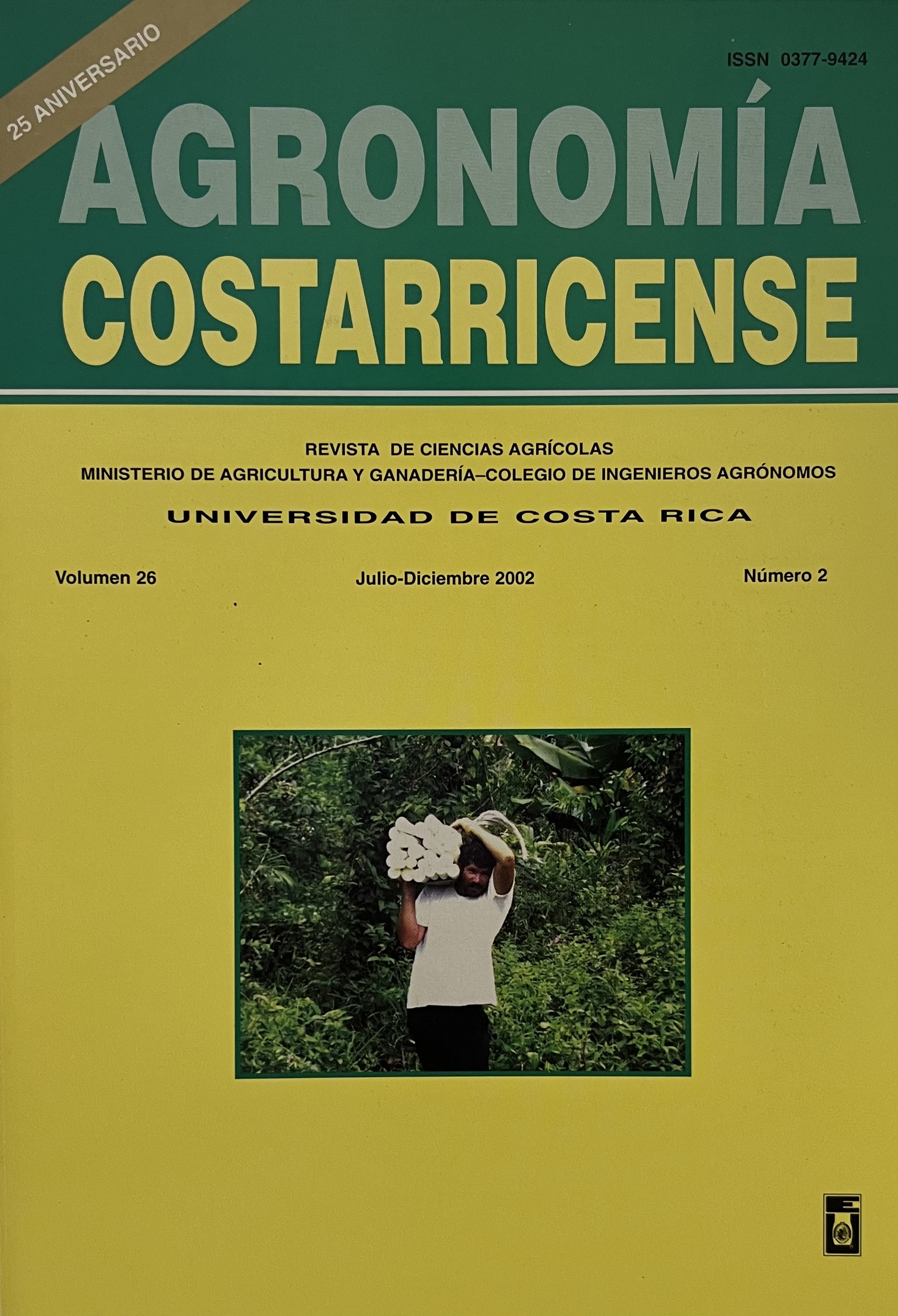Abstract
Peach palm (Bactris gasipaes) agroecosystems constitute a productive and sustainable land use for the humid tropics. Allometric methods allow to predict biomass non-destructively at any time and, subsequently, to determine the span of growth phases, biomass and nutrient pools, and economic yields. The overall goals of this study were to obtain and validate predictive functions of above- ground dry biomass, and to relate standing biomass with heart-of-palm yields as well. Towards this purpose, peach palm shoots were harvested and separated into components: foliage, petiole and stem, in the Atlantic region of Costa Rica. A non-linear seemingly unrelated regression (NSUR) procedure, which simultaneously fits the component equations that predict leaf, petiole and stem in order to assure biomass additivity, was used to generate the allometric equations. Basal diameter (BD) was a more effective predictor of biomass than height to the fork between the spear leaf and the first fully expanded leaf, total height and number of leaves. Regression models explained 70-89% of the variance in biomass components (foliage, petiole and stem) or total shoot biomass. Three growth stages were identified: establishment (0-1 years), fast growth (1-3 or 1-8 years depending on plant density) and maturity (> 8 years). Nutrient contents associated to above- and below-ground biomass were measured. For above-ground biomass nutrient contents were N (up to 150 kg ha-1)>K (up to 119 kg ha-1)>Ca (up to 45 kg ha 1)>Mg=S=P (between 15-17 kg ha-1). The below-ground biomass: above-ground biomass ratio increased with the plantation age.
##plugins.facebook.comentarios##

This work is licensed under a Creative Commons Attribution-NonCommercial-NoDerivatives 4.0 International License.
Copyright (c) 2024 Agronomía Costarricense


